How To Help a Child With Separation Anxiety at School
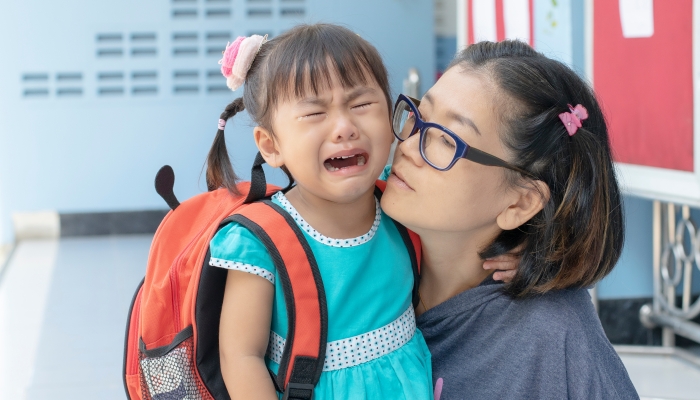
- Separation anxiety can manifest emotionally, physically, or behaviorally.
- There are several strategies to help ease the transition into school.
- Teachers and school counselors are great resources in this transition.
- Professional help through therapy and medication is an option when the symptoms presented are severe.
It’s never easy to see your child upset. As parents, our first instinct is to comfort them, but as they grow older, we can’t always physically be there. School is one of the first significant experiences where this becomes painfully obvious. If your child suffers from separation anxiety, that experience is on an entirely different level!
Separation anxiety might make schooling feel impossible, but with some key information, there’s certainly hope for success! Stay put and find out how to help a child with separation anxiety at school and the various resources to support them throughout their day.
Understanding Separation Anxiety
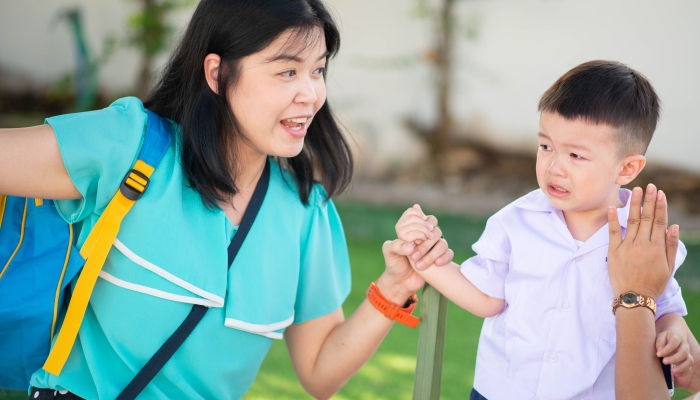
Knowing what separation anxiety is and why it happens is an important first step in helping your child overcome it.
What is Separation Anxiety?
This type of anxiety has two distinctions. First, separation anxiety disorder (SAD) is characterized by an extreme worry or fear of separation from a parent, primary caregiver, or family member. Second is your normal childhood separation anxiety seen in younger children, which may be a few tears shed at drop off or some initial anxiousness while they get settled in.
Why Does It Happen?
There are several reasons your child may be experiencing separation anxiety, some more obvious than others. For example, major life events tend to affect a child’s behavior and feelings in one way or another; moves, family changes, and trauma make the top of the list.
Your child’s general temperament and level of sensitivity can also play a role. If they’re usually super timid, testing the waters in new places or activities, you might expect there to be some separation anxiety when they no longer have you to lean on, physically and emotionally.
Harder to decipher but important to keep in mind are the possible psychological reasonings for your child’s separation anxiety. Attachment theory is at the forefront of this discussion since it centers on forming emotional bonds from the time of pregnancy and beyond.
Pasco Fearon’s research in Attachment Theory: Progress and Future Directions11. Fearon, R. M. P., & Roisman, G. I.. Attachment theory: Progress and future directions. Current Opinion in Psychology. 2017;15, 131–136. https://doi.org/10.1016/j.copsyc.2017.03.002 sums it up best, stating, “Since its inception, attachment theory has been more than a theory of infant behavior, and a key proposition flowing from it is that security of attachment affects later socio-emotional development.”
Simply put, how responsive or unresponsive we are to our children and the bond we’ve either formed or not formed with them will directly affect their ability to depend on us and trust us, especially in new situations like a school setting.
Common Signs and Symptoms
If you’re unsure whether or not your child’s behavior falls into the realm of separation anxiety, check out this list of common signs and symptoms from Stanford Medicine’s Separation Anxiety Disorder in Children22. Separation Anxiety Disorder in Children. Stanford Medicine Children’s Health – Lucile Packard Children’s Hospital Stanford. https://www.stanfordchildrens.org/en/topic/default?id=separation-anxiety-disorder-90-P02582:
- Emotional symptoms: Intense worry when separated, generally about getting lost, the safety of a family member, or safety of self; fearfulness of being alone, too.
- Physical symptoms: Stomachaches, headaches, or other physical manifestations; nightmares and muscle tension as well.
- Behavioral symptoms: Clinginess even when home, refusal to attend school, panic or temper tantrums when separated.
Do keep in mind that a child battling with separation anxiety can look many different ways. Age and severity will play a role in how their symptoms manifest. The list above is not exhaustive, so consult your child’s doctor with any concerns!
Strategies for Easing the Transition to School

If your child struggles with separation anxiety, there are some ways you can ease their transition to school.
Gradual Exposure
If homeschooling methods aren’t an option, then one of the best ways to ease the transition into attending school is through short separations increased over time. This allows your child to become acclimated slowly, without pushing them too far too fast, as with a separation lasting the entire school day.
You could also try to role-play and rehearse the school routine. Foreknowledge of what the day’s events will look like leaves your child with no surprises and an agenda to expect. Try giving them exact details on the classroom schedule, what activities they might participate in, their teacher, and when they can expect you back.
Establish Consistent Routines
Kids are creatures of habit, and it’s no secret they thrive on a schedule. The predictability of a routine is bound to give them at least some level of comfort since they’ll know what’s coming. Be consistent with your drop-off and pick-up times. Even make evening and morning routines prior to school days something they can anticipate.
Foster School Engagement
School engagement not only continues the process of familiarizing your child with their surroundings but also gets them excited to engage, which hopefully leads to less separation anxiety. Have them participate in extracurriculars that match their interests, fostering good associations with the school.
Also, setting up playdates with classmates is the perfect way for them to forge friendships that’ll help them feel more secure in the classroom without you. They’ll have more familiar faces surrounding them to distract from your absence.
Communication Techniques
The importance of communication is universal, so setting the tone when you’re dealing with school separation anxiety is no different. Try using goodbye rituals at drop-off; again, establish a known routine. Giving them something to take with them may also be helpful—a special toy or photo, for example.
Lastly, encouraging them to express their feelings and concerns is vital. Let them know that you want to hear how they’re feeling about school. Check in with them daily to see what may have helped or if they have any preferences on how to make the transition easier.
Collaborating with School Professionals
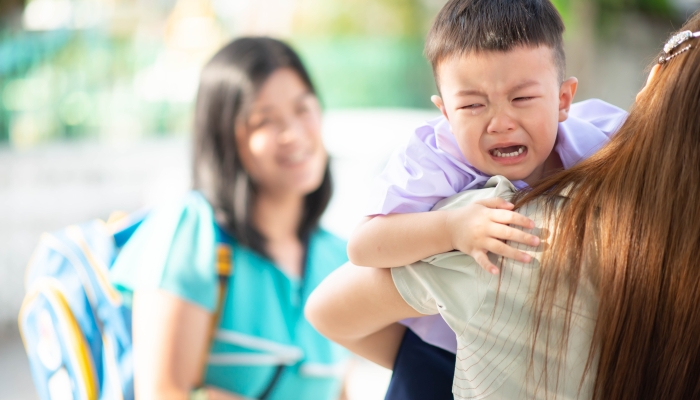
Communication with your child’s school is crucial, especially for children with separation anxiety disorder.
Partner with Teachers
Since they’re the ones on the front lines, it’s crucial you share information about your child’s fears and triggers with their teachers. They can help with the transition process and will likely be able to give you ideas of what they’ve seen work in the past with other children.
Be sure to have regular check-ins with them to discuss the progress or setbacks seen on both your end and theirs. Working closely with them to come up with a plan is going to be a recipe for success!
School Counselor’s Role
School counselors are an excellent resource and can be used in this scenario for either one-on-one sessions or group sessions with students facing similar obstacles. With previous hands-on experiences, these counselors can offer techniques and exercises for in-school anxiety management as well as other resources like the possibility of personalized education plans.
IEPs and 504 Plans
An IEP33. What is an individualized education plan (IEP). Heart of Florida United Way. 2016. https://www.hfuw.org/what-is-an-individualized-education-plan-iep (Individualized Education Program) requires public schools to help students via detailed plans catered to their needs in order to succeed. Your child will need to be evaluated first, and once approved by school officials, a plan can be put into place with the collaboration of the student, parents, teachers, counselors, and other necessary personnel.
A 504 plan44. The Children’s Hospital of Philadelphia. FAQs about 504 Plans. Children’s Hospital of Philadelphia. 2023. https://www.chop.edu/health-resources/faqs-about-504-plans comes from the Americans with Disabilities Act and works to provide special accommodations for students with any psychiatric or medical conditions. These plans not only include the regular academic day but also ensure your child is able to participate in nonacademic aspects of school life as well.
At-Home Support
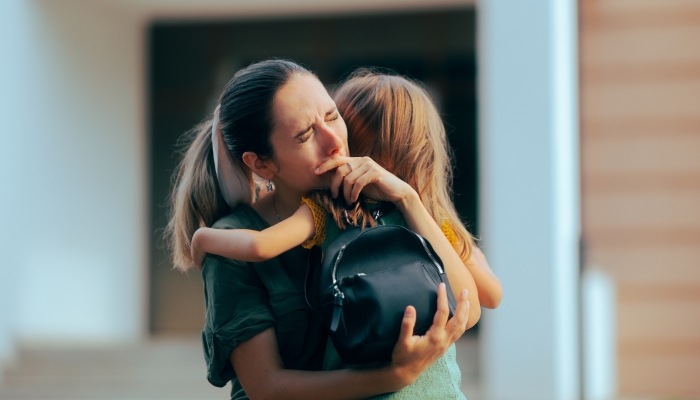
Educating yourself and supporting your child at home can also go a long way. Here’s what you can do at home to help your child:
Maintain Open Dialogue
As discussed in the strategies above, communication is important. Creating a safe space for your child to discuss their feelings surrounding their separation anxiety is pivotal, as is validation. Work on validating and empathizing without reinforcing fears.
Enhance Emotional Intelligence
The fact that you’re reading this shows you’ve started this step already! Read books, watch videos, and peruse articles on the topic. The more emotional intelligence you can gain about the topic only stands to help you guide your child.
Also, begin learning about coping strategies like deep breathing or visualization. While a therapist can give you in-depth explanations, it never hurts to know some and try teaching them to your child.
Limit Stressors
Limiting your child’s stressors is a great tool for reducing anxiety, and The Mayo Clinic55. LaCore, T.. Stressed out kids? Signs and strategies. Mayo Clinic Health System. 2022. https://www.mayoclinichealthsystem.org/hometown-health/speaking-of-health/stressed-out-kids puts a regular sleep schedule at the top of that list. Proper rest will keep them running at full strength without overtiredness exacerbating their anxiety. Exercise, play, diet, and routines are also key components.
For school-aged kids, it’s also essential to monitor their media exposure, especially distressing content.
When to Seek Professional Help
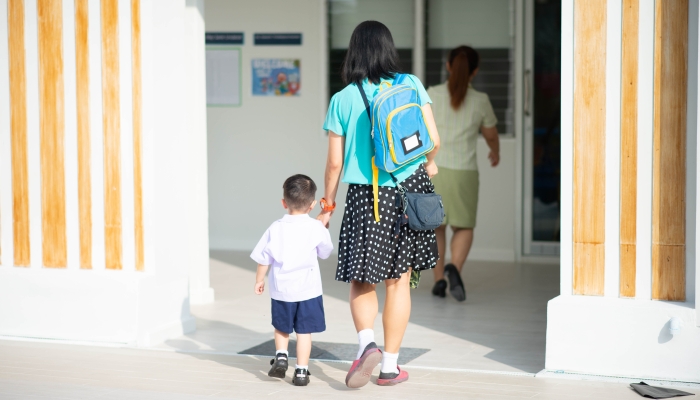
While normal separation anxiety can often be managed at home, some children can benefit from professional help for more severe symptoms.
Recognizing Severe Symptoms
Intense separation anxiety may cause severe symptoms that stand out among the rest. Children’s National Hospital66. Pediatric Separation Anxiety Disorder. Children’s National Hospital. https://childrensnational.org/visit/conditions-and-treatments/mental-health-behavioral-disorders/separation-anxiety-disorder lists violent behavior when separated, screaming, emotional outbursts, and an obsessive fear of dying as severe symptoms, to name a few.
Therapy and Medication
Therapy and medication are generally a last resort, only sought when severe symptoms are present. If that’s the situation you find your child in, there are some crucial elements to both you’ll want to keep in minds as you move forward.
Starting with therapy, it’s key to search for a therapist who specializes in separation anxiety. They’ll be able to either diagnose separation anxiety disorder or point to something more general, like cognitive distortions.
You’ll also want someone who is well versed in working with children and to review their offerings. While CBT (cognitive behavioral therapy or talk therapy) is most common, they may have other means of treatment, like EMDR (eye movement desensitization and reprocessing), coping mechanisms, visualization, and more.
Certain medications may also be recommended, but only when treatments like CBT aren’t creating progress. Doctor Paul Mitrani and Caroline Miller in Guide to Medications for Anxiety in Children77. Miller, C.. Guide to Medications for Anxiety in Children. Child Mind Institute. 2022. https://childmind.org/article/medications-for-anxiety-in-children/#:~:text=Medication%20can%20be%20added%20after,get%20comfortable%20enough%20to%20participate. mention, “Most experts recommend that kids with mild-to-moderate anxiety be treated first with CBT. Medication can be added after the child starts CBT if therapy alone does not seem to be working to relieve their symptoms.”
That said, there’s certainly a case to be made for combined treatment, seeing as its results appear to be far more fruitful together than they are on their own.
For example, Doctor Feriante, in a 2023 study titled Separation Anxiety Disorder88. Feriante, J., Torrico, T., & Bernstein, B.. Separation Anxiety Disorder. National Library of Medicine. 2023;. https://www.ncbi.nlm.nih.gov/books/NBK560793/ , finds, “More recent data suggest that combination treatment with CBT and SSRIs is more efficacious than either treatment alone, with as many as 81% of children with anxiety disorders who received sertraline and CBT being classified as responders compared to a 60% response rate for CBT alone and 55% response rate for sertraline alone.”
Regardless of the efficacy of a combined treatment, be aware that the use of anxiety medication does come with the potential for side effects. Some of these include nausea, vomiting, and diarrhea, as mentioned in the same article by Doctor Feriante.
References
- Fearon, R. M. P., & Roisman, G. I. (2017). Attachment theory: Progress and future directions. Current Opinion in Psychology, 15, 131–136. https://doi.org/10.1016/j.copsyc.2017.03.002
- Separation Anxiety Disorder in Children. Stanford Medicine Children’s Health – Lucile Packard Children’s Hospital Stanford. (n.d.). https://www.stanfordchildrens.org/en/topic/default?id=separation-anxiety-disorder-90-P02582
- What is an individualized education plan (IEP)? Heart of Florida United Way. (2016, April 28). https://www.hfuw.org/what-is-an-individualized-education-plan-iep
- The Children’s Hospital of Philadelphia. (2023, May 4). FAQs about 504 Plans. Children’s Hospital of Philadelphia. https://www.chop.edu/health-resources/faqs-about-504-plans
- LaCore, T. (2022, June 2). Stressed out kids? Signs and strategies. Mayo Clinic Health System. https://www.mayoclinichealthsystem.org/hometown-health/speaking-of-health/stressed-out-kids
- Pediatric Separation Anxiety Disorder. Children’s National Hospital. (n.d.). https://childrensnational.org/visit/conditions-and-treatments/mental-health-behavioral-disorders/separation-anxiety-disorder
- Miller, C. (2022, June 29). Guide to Medications for Anxiety in Children. Child Mind Institute. https://childmind.org/article/medications-for-anxiety-in-children/#:~:text=Medication%20can%20be%20added%20after,get%20comfortable%20enough%20to%20participate.
- Feriante, J., Torrico, T., & Bernstein, B. (2023, January). Separation Anxiety Disorder. National Library of Medicine. https://www.ncbi.nlm.nih.gov/books/NBK560793
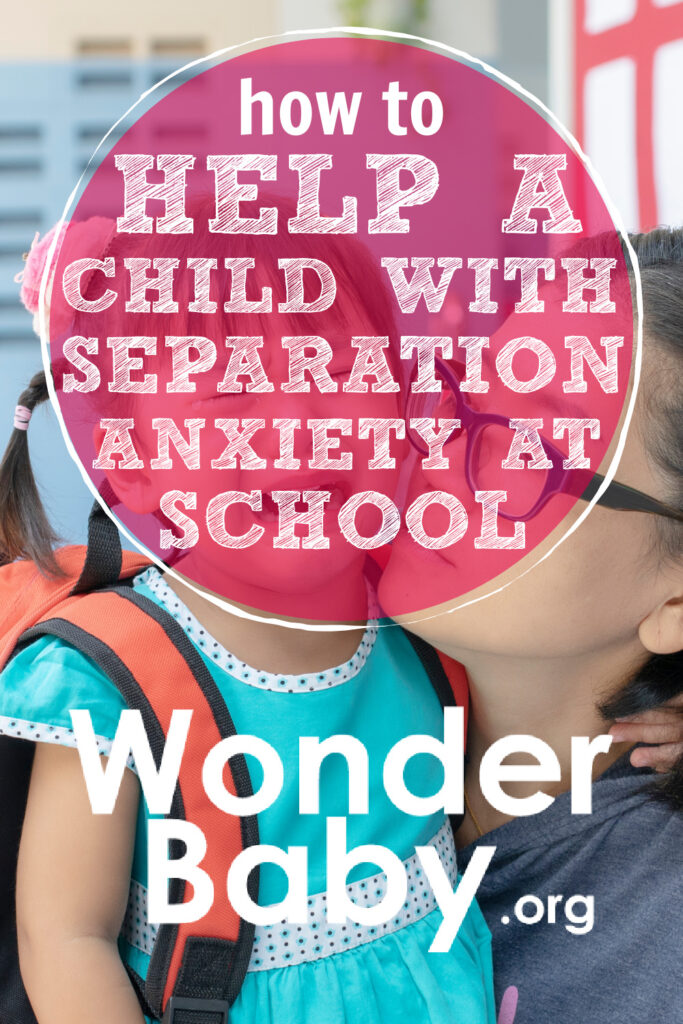
Related Posts
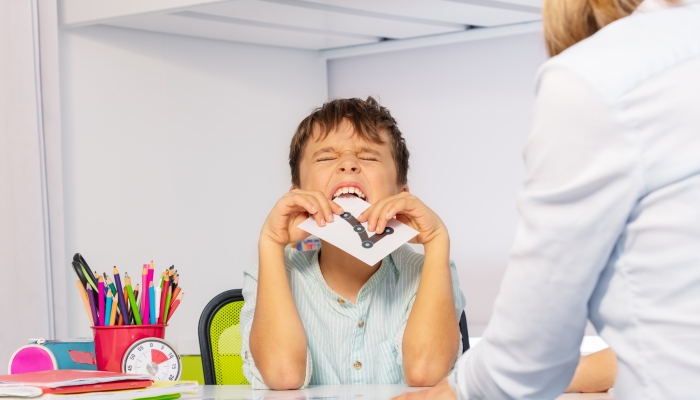
Behavior
Understanding Intermittent Explosive Disorder in Children
Are you worried about your child’s unexpected aggression and explosive behaviors? Learn how to support a child with intermittent explosive disorder.

Behavior
5 Emotional Regulation Activities for Kids
Want to teach your child how to regulate emotions? Here are emotional regulation activities for kids that can help!
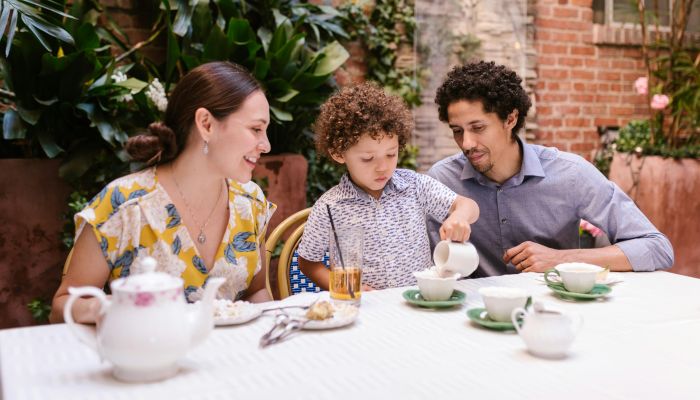
Behavior, Special Needs
5 Tips for Dining Out with Children Who Have Sensory Sensitivities
Worried about dining out with sensory sensitivities? Try these tips for less stress and more fun the next time you take your family out to eat.